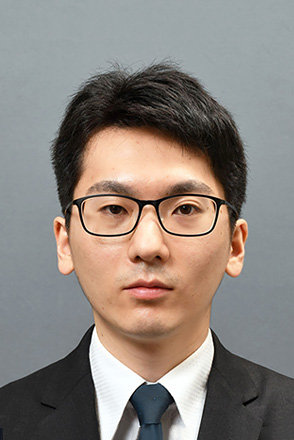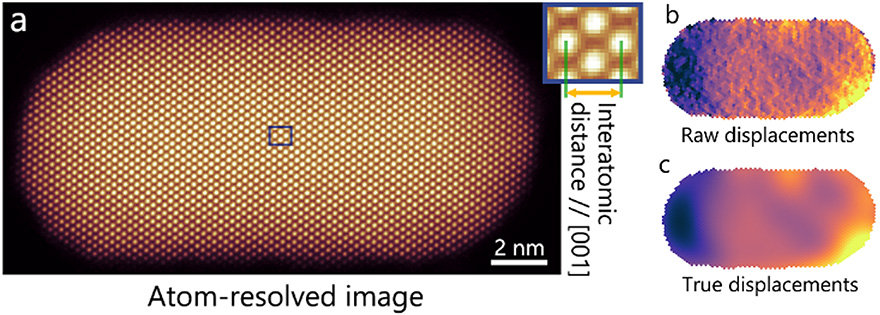
Discovering the Wonders of Materials at the Atomic Scale Through Image Processing and Electron Microscopy
Laboratory on Microscopic Nano-Characterization
Senior Lecturer:ASO Kohei
E-mail:
[Research areas]
Atomic-scale material analysis
[Keywords]
Inorganic materials, solid state physics, nanomaterials, nanometer-scale measurement, material analysis, image processing, electron microscopy
Skills and background we are looking for in prospective students
It is important to approach your research theme seriously, remain open to feedback, and enjoy your daily research activities. An interest in any of the following-- solid materials, electron microscopy, image processing, or probability and statistics-- would be beneficial. Having knowledge in these areas is a plus, but it is not essential.
What you can expect to learn in this laboratory
You will develop the skills, knowledge, and experience necessary to carry out research through a series of activities, including acquiring knowledge about materials, mastering electron microscope operation, processing images using Python, interpreting results, documenting findings, engaging in discussions, and synthesizing outcomes.
As a fundamental skill, we focus on improving your writing skills so that you can refine and articulate your ideas clearly. Daily research interactions are conducted through written communication. In the future, strong writing skills will be crucial for preparing documents in companies or universities, as well as for effectively utilizing large language models.
【Job category of graduates】
Electrical and materials manufacturers, materials analysis companies, university researchers and technical staff, etc.
Research outline
Our research focuses on developing advanced analysis methods using image processing combined with electron microscopy to discover the fascinating behaviors of materials at the atomic scale. Raw microscope data is just a collection of numerical values. We can extract valuable information such as particle size, crystal structure, and atomic positions through image processing1,2. Recently, we have started video analysis of active devices in operation3. Since videos contain numerous sequential images, efficient image processing techniques are essential for analyzing them.
Current Research Topics
We are exploring several research themes, including:
1. Analysis of lithium-ion battery materials under operation
2. Developing statistical and 3D analysis methods
3. Developing precise analysis methods for atomic positions
Here, we will focus on the third topic.
Developing precise analysis methods for atomic positions
Figure 1a shows an electron microscopy image of a rod-shaped gold nanoparticle. The bright spots in the image represent atomic columns aligned in the depth direction. These bright spots appear to be regularly arranged.
We measured atomic displacements-- how much the atoms deviate from their expected periodic positions. Traditional methods show small and random fluctuations in the displacement map (Figure 1b). However, these fluctuations are statistical noise.
To address this issue, we applied Gaussian process regression, a signal processing technique, to extract the true atomic displacement information (Figure 1c). As a result, we successfully detected atomic displacements as small as 0.7 pm (picometers, one trillionth of a meter) and observed 2.4 pm atomic displacements occurring within the material.
Through this analysis, we discovered that atomic columns at the tip of the nanoparticle shift outward along the axis. This displacement is thought to be caused by differences in surface tension between the tip and the body of the rod-shaped particle, due to their differing curvatures.

Figure 1 (a) Electron microscopy image of a gold nanorod. The columns of gold atoms arranged along the depth direction appear as bright spots. (b) Atomic displacements measured using conventional methods, and (c) atomic displacements processed using data science techniques. Atoms shifting to the left from their normal positions are indicated in dark blue, while those shifting to the right are shown in bright yellow.
Key publications
- K. Aso, J. Maebe, XQ. Tran, T. Yamamoto, Y. Oshima, and S. Matsumura, “Subpercent Local Strains due to the Shapes of Gold Nanorods Revealed by Data-Driven Analysis”, ACS Nano 15 (2021) 12077
- K. Aso, H. Kobayashi, S. Yoshimaru, XQ. Tran, M. Yamauchi, S. Matsumura, and Y. Oshima, “Singular behaviour of atomic ordering in Pt–Co nanocubes starting from core–shell configurations”, Nanoscale 14 (2022) 9842
- J. Liu, J. Zhang, K. Aso, T. Arai, M. Tomitori, and Y. Oshima, “Estimation of local variation in Young’s modulus over a gold nanocontact using microscopic nanomechanical measurement methods”, Nanotechnology 36 (2025) 015703
Equipment
Scanning transmission electron microscope, workstation PC, scanning electron microscope with focused ion beam, specialized holder for electron microscopy, electrochemical measurement apparatus, glove box.
Teaching policy
We actively engage in collaborative research. Students can build self-confidence by responsibly pursuing their individual tasks and achieving results that satisfy both them and their research collaborators. Moreover, students cultivate a broad perspective by embracing a wide range of ideas without being constrained by personal preferences or biases. We encourage daily discussions on each research topic and flexibly adjust our direction when necessary. One of the exciting aspects is discovering fascinating themes that were unimaginable at the outset. We provide maximum support so that when our students complete their graduate studies, they have done their best, achieved satisfying outcomes, and paved the way for a brighter future.
[Website] URL : https://www.jaist-oshima-labo.com/english/